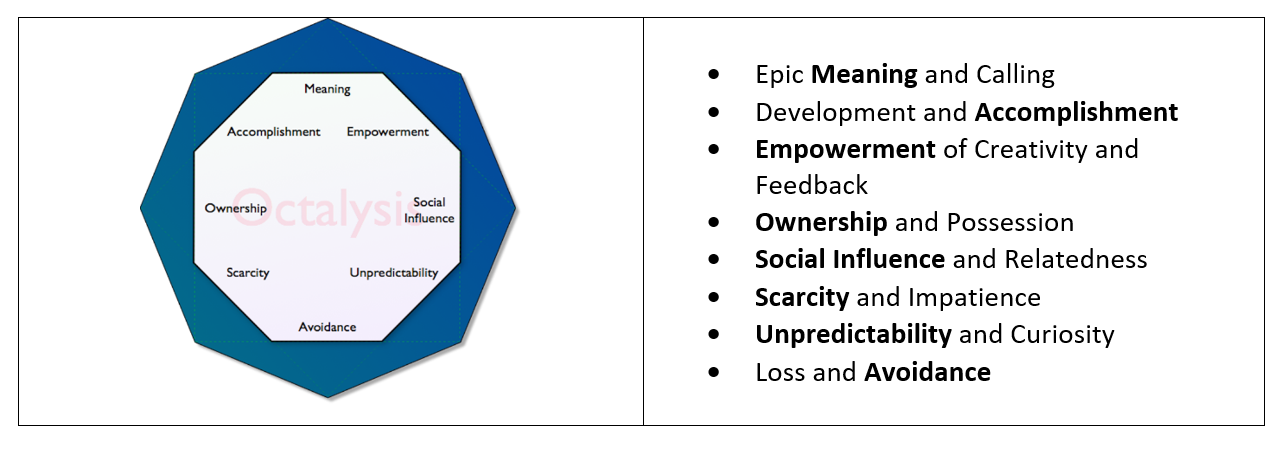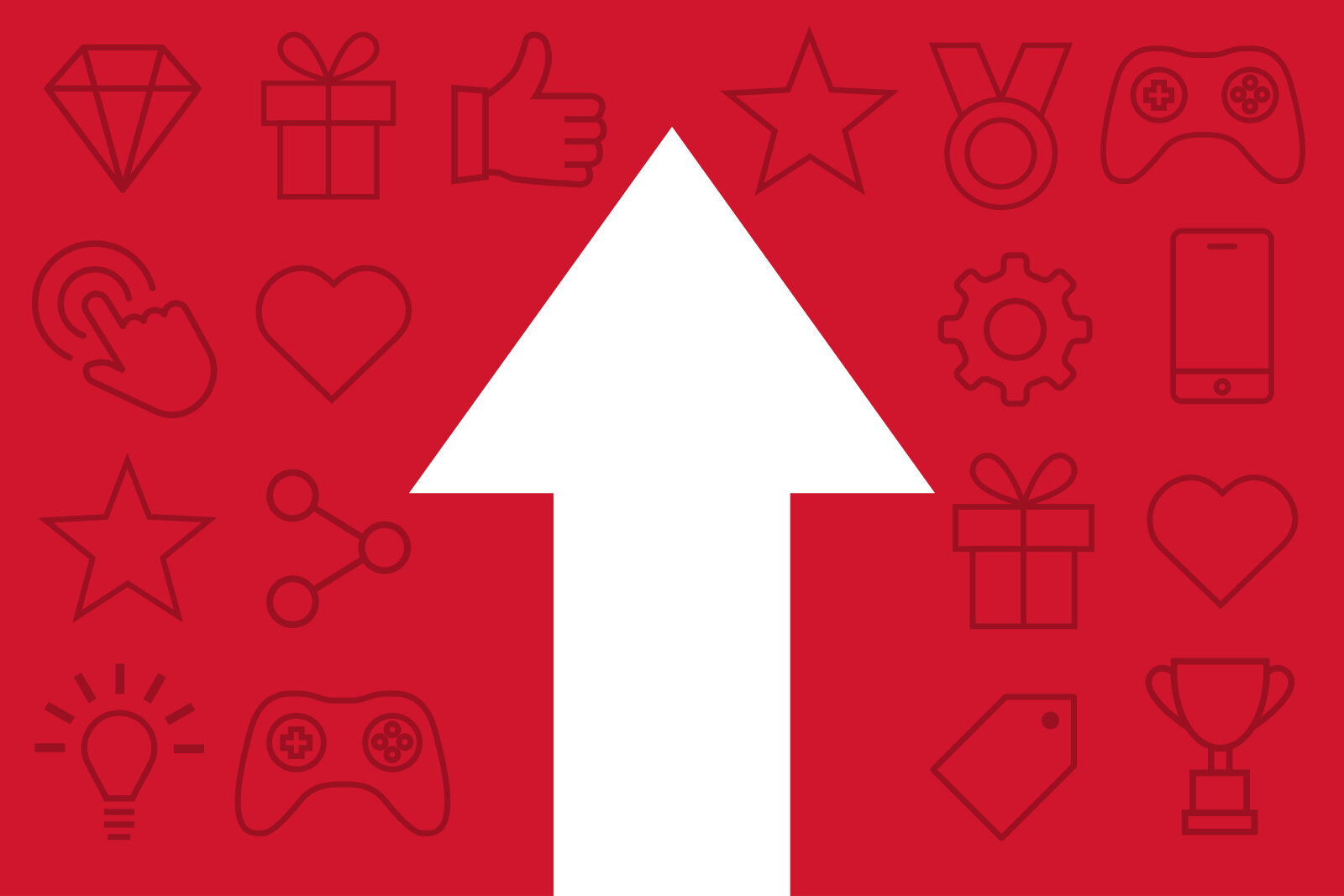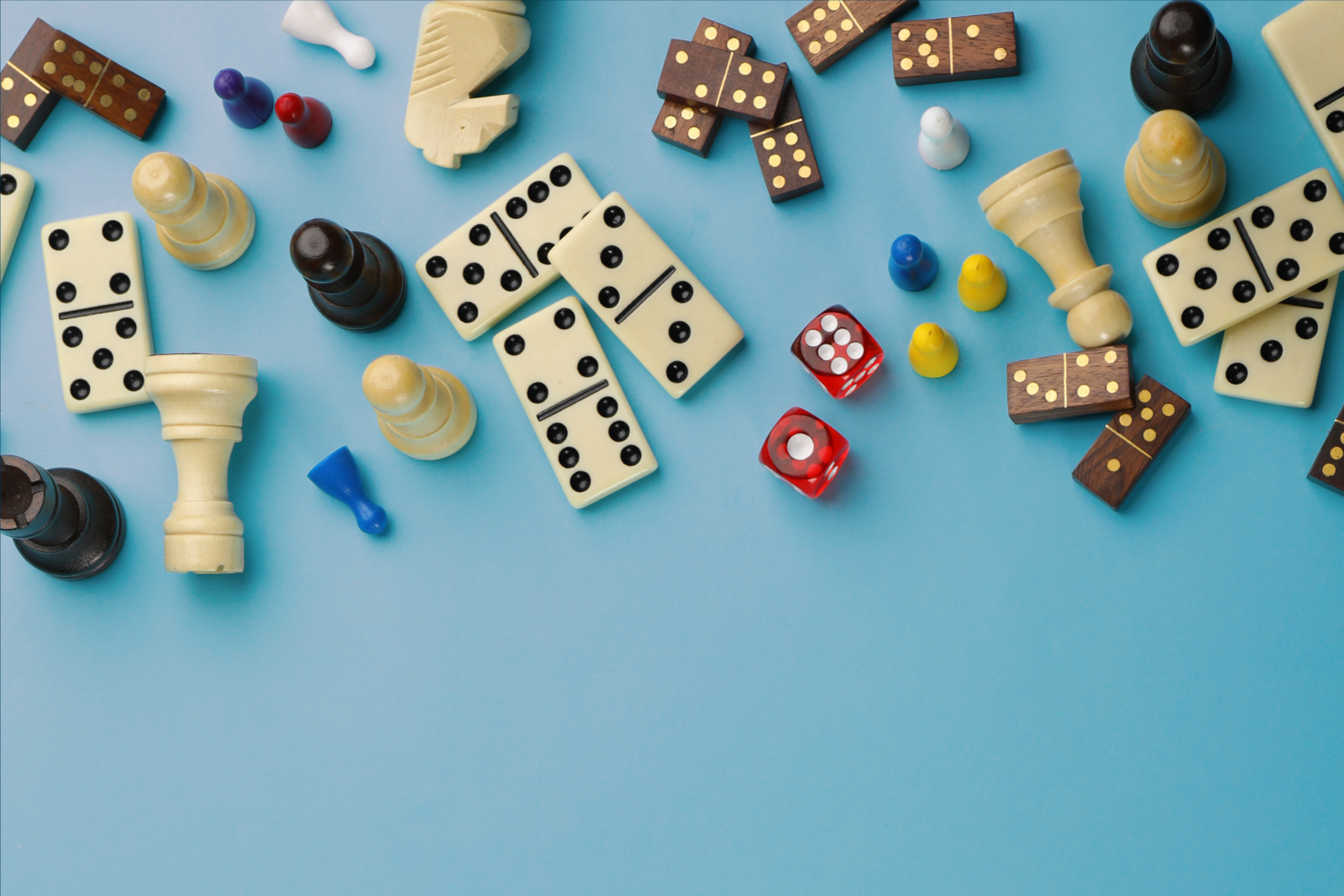A Game Plan for Brand Loyalty

Candy Crush Saga, Roblox, Pokémon GO, Wordle, League of Legends—there’s a good chance that you, or someone close to you, is obsessed with one of the many chart-topping mobile games. Highly engaging and entertaining to users, gaming is a growing industry: Mobile gamers—that is, people who play games on their smartphones—currently make up the largest segment of video game users around the globe. By 2023, NewZoo expects the number of gamers to grow to 3.07 billion players worldwide.
Exposure to elements of gamification is well established for Gen-Zers and millennials—the generations growing up in the age of mobile devices and apps. These elements create a level of expectation for the experience and interactions on mobile devices. And more recently, gamification advancement on mobile apps has created new opportunities for the loyalty programs of highly engaging brands.
But let’s take a step back and dig into gaming first. The typical mobile gamer is likely not the person you expect.
-
Mobile gamers are 55% female and 45% male. (Statista)
-
More than 50% of mobile gamers are age 34 and up. (Mediakix)
-
A mobile gamer’s average age is 36. (MoPub)
-
Gen Zers and Millennials spend more time gaming than being entertained by anything else. (Newzoo)
-
42% of Baby Boomers play games an average of two-and-a-half hours per week. (Newzoo)
-
90% of smartphone usage is through apps and games. (eMarketer)
All this time spent by smartphone users playing online games establishes patterns that drive usage and behaviors in other experiences. Gamification, a popular term since 2010, simply means applying engaging and entertaining game elements and mechanics to non-game activities—including those involving everyday brands. For example, McDonald’s, Jeep, and the U.S. Army have all used games to engage their target audiences. Other applications of gamification techniques encompass more general topics as well, such as increasing organizational productivity, learning new skills or topics, participating in professional development, getting physical exercise, marketing, and reducing traffic violations.
Gamification expands reach
Consider these additional gamification applications to non-game activities:
-
Monday.com, a cloud-based platform, allows users to create their own applications and management workflows. Workflows revolves around a team’s shared dashboard. A project is broken down into assigned tasks and the status of each task is color-coded based on progress level— green for complete, red for stuck, and so on. Completing a task becomes an achievement visible to other team members working on the project.
-
Duolingo, an app that helps users learn languages, is highly gamified, employing badges, leaderboards, streaks (consecutive interaction), and points to motivate users. The Pittsburgh-based company has spent years optimizing gamified experiences to keep learners coming back and achieving goals.
-
Peloton, which provides fitness classes through internet-connected stationary bikes and treadmills, focuses on leaderboards to create competition among class attendees.
-
Multimedia app SnapChat employs streaks to encourage users to return to the platform every day to maintain social connections with friends. Streaks create social pressure among users to maintain daily communication and increase app engagement.
These examples use game mechanics, such as badges to reward accomplishments; leaderboards rank performance and encourage competition; progress bars help participants visualize advancement toward a goal; and avatars provide a virtual identification associated with achievements.
When implemented properly, gamification can be a fantastic way to increase user engagement and improve user experience. Too often, companies simply add game elements to an app or loyalty program without shaping an expanded gamified experience. True gamification develops motivation to drive user engagement. In the past, loyalty programs focused on providing rewards for a certain number of transactions. Remember those good old punch cards? Get 10 or 12 punches, and you’d receive a free cup of coffee or some other product. Since that heyday of punch cards, loyalty have embraced personalized communications through first-party data collection and CRM. Today, most loyalty programs have moved on to mobile devices, so opportunities for continuous engagement are more often initiated by users and involve real-time data.
A natural evolution for loyalty
Gamification is a natural next step for loyalty programs, which already share characteristics with many games—e.g., rules, tiers, points (or currency), rewards, and more.
Nike, Starbucks, and Amazon gamify their marketing activities—and for good reason: The gamification market is expected to reach a valuation of $30.7 billion by 2026. Examining loyalty opportunities from a gamification perspective highlights its growth potential, especially for brands that leverage data and move beyond extrinsic motivators—those that encourage engagement to earn a reward or avoid punishment— to include intrinsic motivators. Loyalty programs are encouraging engagement because the engagement itself is personally rewarding. Delving into this idea more deeply, let’s consider the ideas proffered by the Octalysis Framework, a gamification and behavioral design framework developed by Yu-Kai Chou.
Octalysis is posited on the idea that human behavior is based on one ore more of the eight key drivers.

The framework’s octagonal shape and the placement of drivers is intended to reflect the nature of each motivation and the interactions between them. As a general rule, the extrinsic motivators—associated with rewards, money, points, and recognition—are on the left. Meanwhile, the intrinsic motivators (i.e., those connected to fun, enjoyable, satisfying activities) land on the right side of the octagon.
Among extrinsic motivators, traditional loyalty programs are strongest in avoidance (e.g., point expiration, offer termination), scarcity (e.g., point multipliers), ownership (e.g., products, rewards), and accomplishment (e.g., goals, points, tiers). However, they typically lack meaning (e.g., a higher calling), empowerment (e.g., creativity), social influence (e.g., friends, groups, socialization), and unpredictability (e.g., chance).
Savvy companies add more core drivers to their loyalty program structures and engage their members more deeply by adding more intrinsic activities. That is, they move engagement from purely transactional goals to ongoing and personally rewarding member engagement.
Intrinsic motivators lead to deeper loyalty
Loyalty programs provide incentives and rewards that can lead members to internalized engagement and emotional connection with the brand. For example, a loyalty program with tiers and points can increase intrinsic motivators by leveraging core drivers, such as empowerment and social influence. Joining a branded social community, for example, can be rewarded with bonus points, at least initially. Then, by participating in the community, members interact with and receive appreciation from other members. And this leads to greater empowerment through acts of creation and social influence from their increased community participation.
Since this is a community, many members will advocate for the brand or product. This not only increases a member’s loyalty but provides indirect contributions from the customer to the brand. Indirect contributions are non-purchase behaviors that add value to the company. Examples can include referrals (including incentivized), social media conversations, influencer mentions, product reviews, feedback/suggestions, testimonials, etc. Here are two examples:
-
In addition to providing the Sephora Beauty Insider loyalty program, the French beauty company hosts a brand community where Insider status is shown on every post. This both deepens loyalty through nontransactional engagement and creates brand advocates.
-
In 2018, Nike China used emotional and social bonds to court customers, inviting them to try on React athletic shoes in select stores in key cities. Via virtual reality, customers ran on treadmills while playing a game called Reactland and then shared their 10-second personalized videos on social media. In return, they received corresponding rewards and discount offers. Impressively, 48% of participants purchased the shoes.
Gamification isn’t always an actual game, but sometimes it is. Starbucks launched its seventh-annual summer game in May 2022. Road to Paradise, similar to Candy Crush, invited mobile app users to tap on matching objects to clear them from a playing board. Starbucks offered five million prizes, including gift cards and Starbucks Stars loyalty points, which could be used for drinks and food. One lucky participant won a Volvo XC40 Recharge.
However, it would be a mistake to assume this is Starbucks’ entire gamification. In fact, Starbucks’ loyalty program is itself a game. Road to Paradise can be viewed as a level within the game that keeps the experience fresh and leverages aspects of games in new and unique ways. And this happens all while promoting Starbucks through brand engagement and its loyalty currency.
The Mile Badge Game, launched in late 2022 by Chase United, is another actual loyalty program game. Select cardholders receive bonus miles when they collect virtual badges by completing activities, including using the card in a digital wallet, setting up automatic payments, interacting with the United app, and booking a flight. Additional badges will be announced and unlocked during the campaign to keep members engaged.
Gamification yields valuable data
Quizzes and surveys engage members, teaching them about the brand; meanwhile, the brand collects additional data for personalization through entertainment. Noodles & Company, for example, embedded a poll in an email asking members to select their favorite offer: free delivery, percent off an entrée, percent off an order, or dollar off. Their answers enabled Noodles & Company to better select future targeted offers for individual members. Additionally, Noodles saw a ninefold gain in its click-through rate while generating $71 for every 100 emails sent.
Similarly, Chipotle ran a quiz campaign to engage members and test their knowledge of the brand and loyalty program. Chipotle IQ incentivized participants with a BOGO offer for the first 100,000 members who answered all questions correctly. These Chipotle rock stars were given an “extra credit” question that entered them into a $500 gift card giveaway. This type of sweepstakes offers an additional gamification element: unpredictability. Unfortunately, some users gamed the system, giving away answers on YouTube. Obviously, a loyalty program manager needs to anticipate this type of activity, both inside and outside of the program.
As loyalty program gamification advances, brands should continue to draw inspiration from the gaming industry itself. A brand, for example, might encourage program currency redemption for virtual items or no-cost perks, thereby reducing the loyalty program’s financial liability. In Grand Theft Auto Online, users earn currency or buy it in the game and exchange or purchase cars and other in-game virtual products with no real-world value. That ownership and currency keep bringing GTA users back. The loyalty program world, meanwhile, has taken notice:
-
Starbucks Odyssey, a Web3 initiative is a secure, blockchain-powered component of the coffee company’s loyalty program designed to deepen relationships with customers and to connect members. On the platform, customers can complete "journeys" like interactive games that allow them to collect NFTs called "journey stamps." Members can also earn, buy, and trade digital collectible stamps that unlock new experiential benefits. These range from a virtual espresso martini-making class and exclusive merchandise to a trip to one of Starbucks' coffee farms in Costa Rica.
-
The airline industry has been providing low and no-cost perks to their members for years. Delta SkyMiles members are eligible for complimentary seat upgrades if a Comfort+ or First-Class seat is available on their flights. Members also get access to priority flight boarding. Both benefits have low-cost to Delta and their members find great value in them.
Loyalty programs that combine gamification, big data, and behavioral economics have the potential to outperform competitors. However, there’s a danger of making a game too challenging—new program members may especially be turned off by complexity and/or too many rules. Good program design introduces gamified elements over time. Imagine that the starting tier in a loyalty program is the first level of a video game—that video game doesn’t introduce all of the game mechanics, capabilities, and story right away. The first few levels slowly introduce and teach mechanics. This is a good approach for loyalty programs too. It avoids overwhelming new members while providing a deeper experience for more seasoned members.
Your loyalty program is there to help your members grow a relationship with your brand over time and resist buying from competitors. Introducing gamification enables your brand to offer interactive elements that can help enhance the emotional bond in that relationship. Brands need to recognize that gamification is more than creating branded games. It requires understanding what motivates your customers and building a journey that engages them on many levels.
Chris Felton is a senior director of strategic services at The Lacek Group, a Minneapolis-based data-driven loyalty, experience, and customer engagement agency that has been delivering personalization at scale for its world-class clients for more than 30 years. The Lacek Group is an Ogilvy company.

